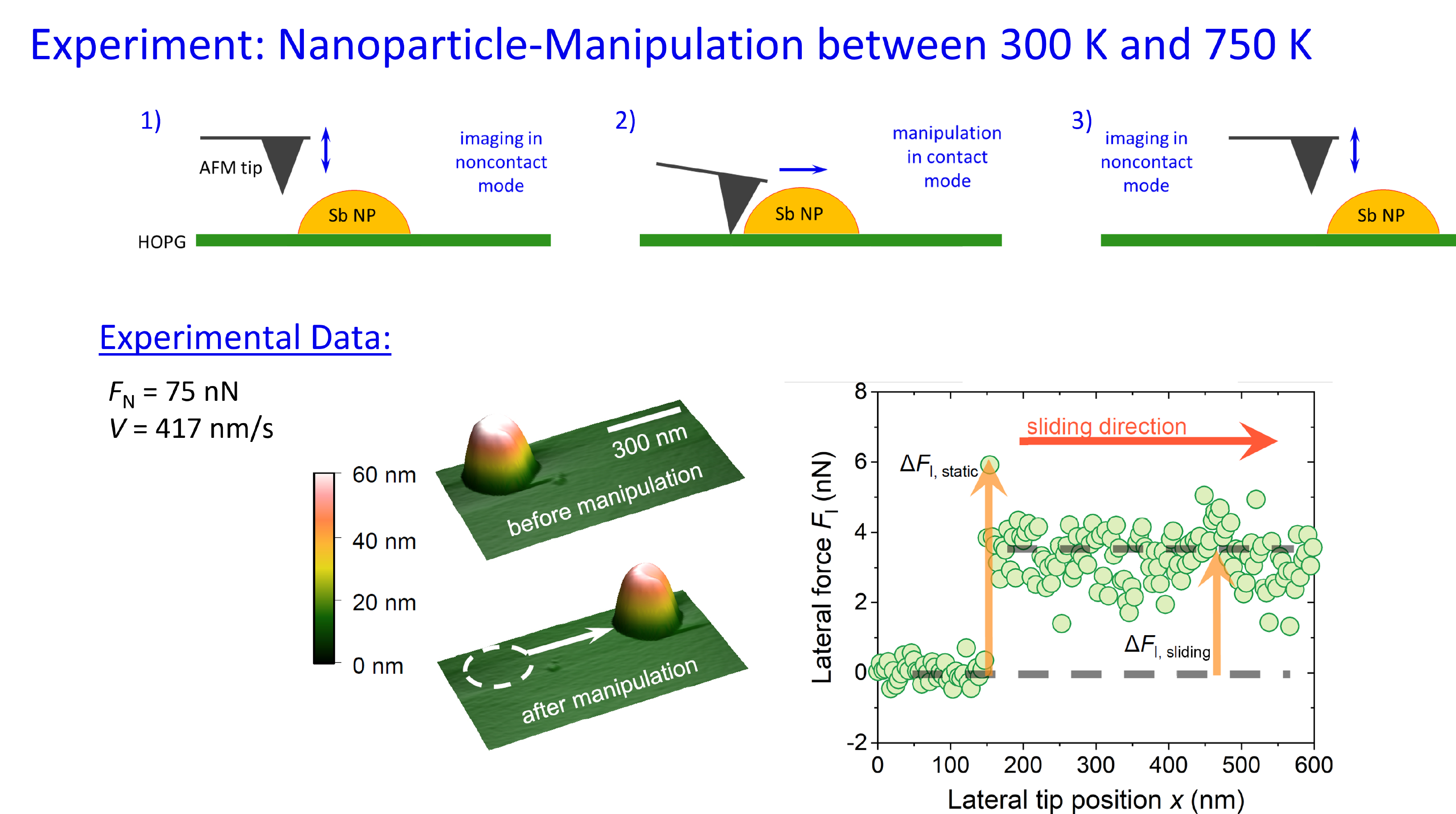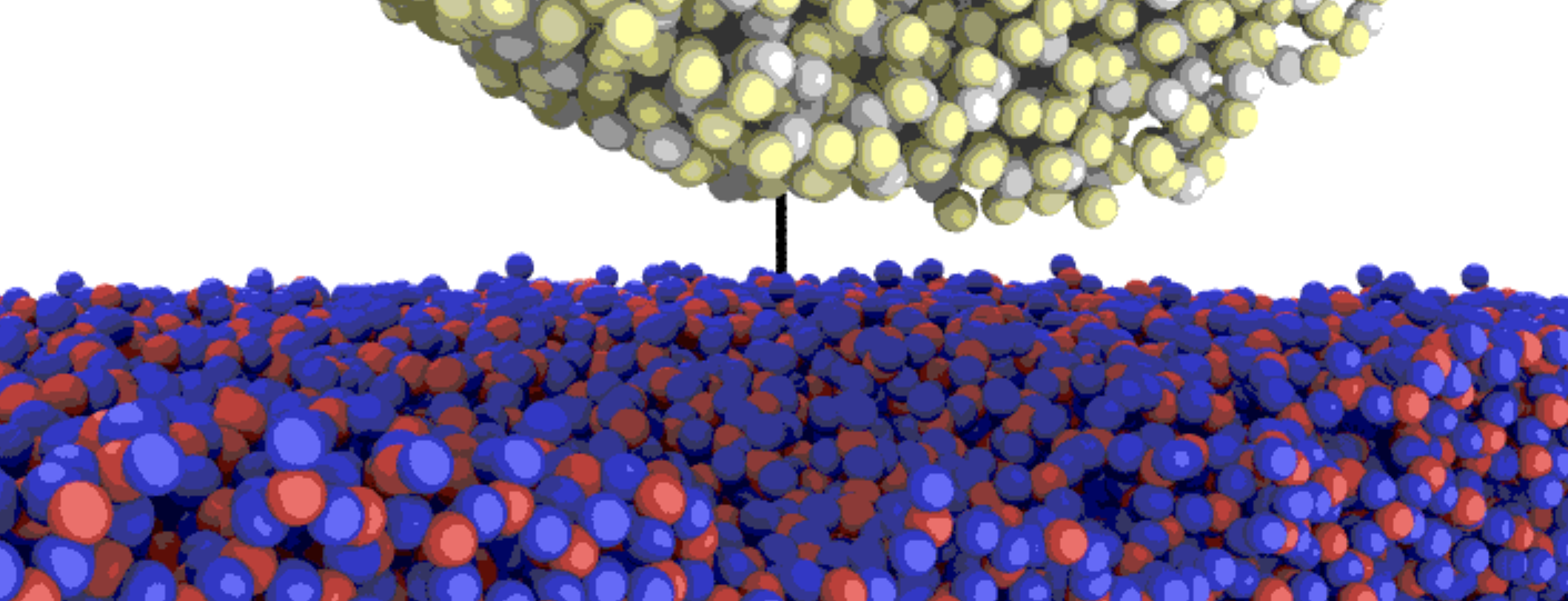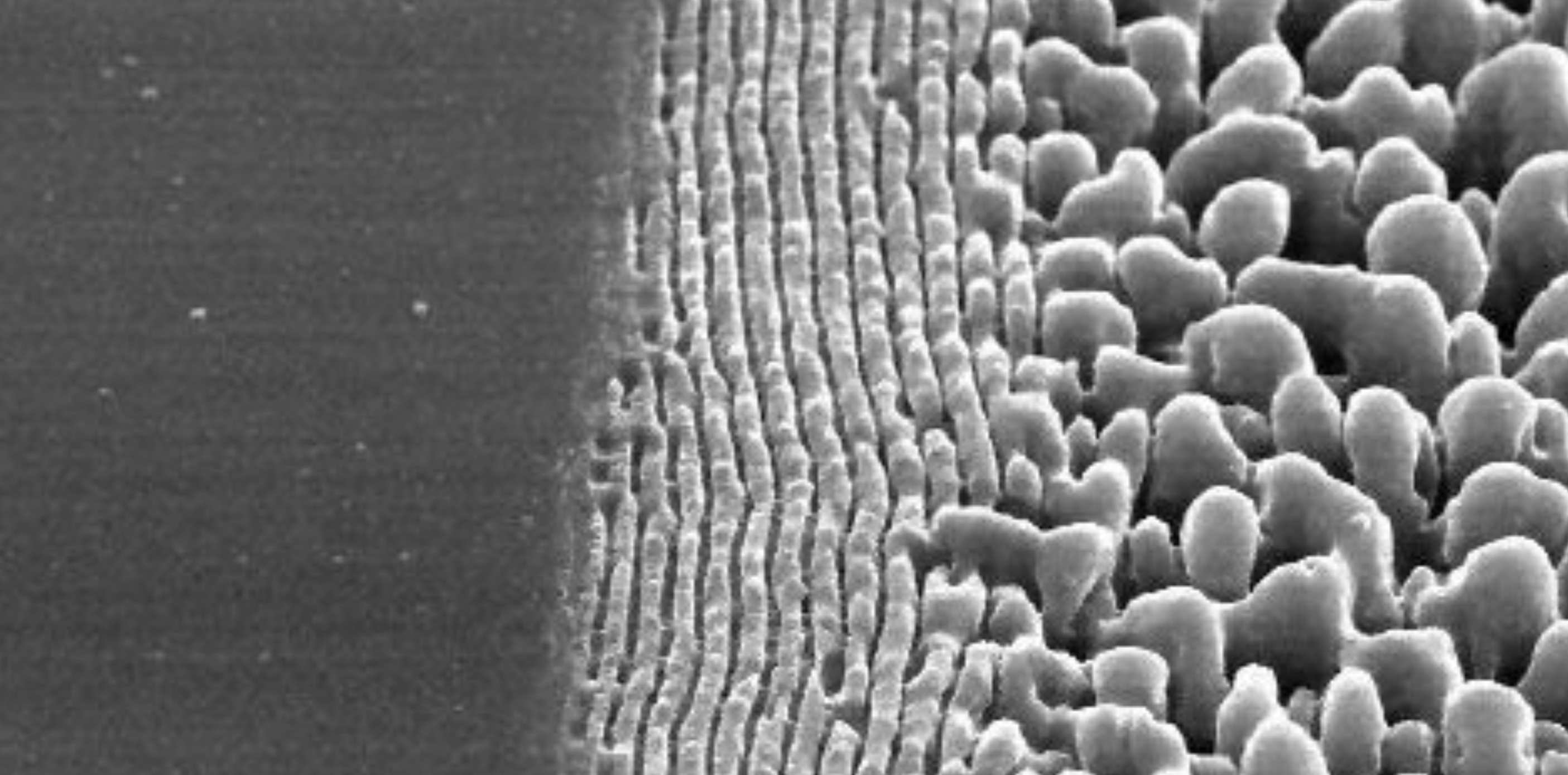

Although the fundamental concept of structural superlubricity (i.e. ultra-low friction observed between clean and atomically flat, incommensurate surfaces) is very straightforward, the effective energy barrier for lateral motion still depends on the exact structural dynamics at the sliding interface. In fact, it can be computationally predicted that the superlubricity of amorphous structures is less effective than that of crystalline structures, however this is not always easy to demonstrate experimentally. But we have now overcome this challenge by measuring the friction of antimony nanoparticles on highly oriented pyrolythic graphite in the high temperature regime, i.e. between 300 K and 750 K, where the interface can be restructured. At about 450 K, we trigger a phase transition in antimony nanoparticles, which also allows us to establish a direct link between friction and the interface structure. More specifically, our experiments reveal that the friction level decreases in the more crystalline state where the collective force cancellations are more effective. Due to the irreversible character of the phase transition, a reduced friction level can then also be observed after cooling back to room temperature. The reduction of friction can be associated with a decrease of the characteristic scaling factor γ of about 16%, as theoretically anticipated from the 'scaling law' for superlubricity (F ∝ Aγ)1,2.
[1] D. Dietzel, M. Feldmann, H. Fuchs, U.D. Schwarz, A. Schirmeisen, PRL 111, 235502 (2013).
[2] E. Cihan, S. Ipek, E. Durgun, M. Z. Baykara, Nat. Comm. 7, 12055 (2016).










Although the fundamental concept of structural superlubricity (i.e. ultra-low friction observed between clean and atomically flat, incommensurate surfaces) is very straightforward, the effective energy barrier for lateral motion still depends on the exact structural dynamics at the sliding interface. In fact, it can be computationally predicted that the superlubricity of amorphous structures is less effective than that of crystalline structures, however this is not always easy to demonstrate experimentally. But we have now overcome this challenge by measuring the friction of antimony nanoparticles on highly oriented pyrolythic graphite in the high temperature regime, i.e. between 300 K and 750 K, where the interface can be restructured. At about 450 K, we trigger a phase transition in antimony nanoparticles, which also allows us to establish a direct link between friction and the interface structure. More specifically, our experiments reveal that the friction level decreases in the more crystalline state where the collective force cancellations are more effective. Due to the irreversible character of the phase transition, a reduced friction level can then also be observed after cooling back to room temperature. The reduction of friction can be associated with a decrease of the characteristic scaling factor γ of about 16%, as theoretically anticipated from the 'scaling law' for superlubricity (F ∝ Aγ)1,2.
[1] D. Dietzel, M. Feldmann, H. Fuchs, U.D. Schwarz, A. Schirmeisen, PRL 111, 235502 (2013).
[2] E. Cihan, S. Ipek, E. Durgun, M. Z. Baykara, Nat. Comm. 7, 12055 (2016).







